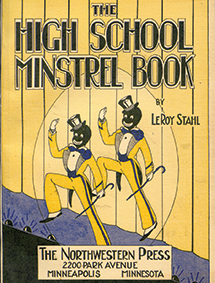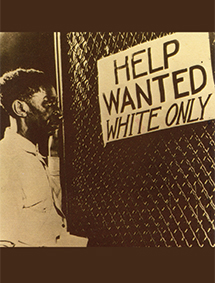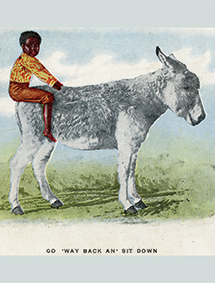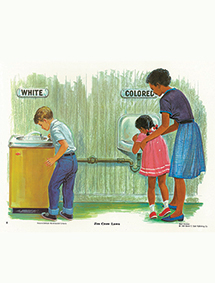Jim Crow Museum
1010 Campus Drive
Big Rapids, MI 49307
[email protected]
(231) 591-5873


The Original Jim Crow (Who was Jim Crow?)Throughout the 1830s and '40s, the white entertainer Thomas Dartmouth Rice (1808-1860) performed a popular song-and-dance act supposedly modeled after an enslaved man. He named the character Jim Crow. Rice darkened his face, acted like a buffoon, and spoke with an exaggerated and distorted imitation of African American Vernacular English. In his Jim Crow persona, he also sang "Negro ditties" such as "Jump Jim Crow." Rice was not the first white comic to perform in blackface, but he was the most popular of his time, touring both the United States and England. As a result of Rice's success, "Jim Crow" became a common stage persona for white comedians' blackface portrayals of African Americans. |
 Jim Crow and Segregation (What was Jim Crow?)After the American Civil War (1861-1865), most southern states and, later, border states passed laws that denied black people basic human rights. It is not clear how, but the minstrel character's name "Jim Crow" became a kind of shorthand for the laws, customs and etiquette that segregated and demeaned African Americans primarily from the 1870s to the 1960s. |
 Father of MinstrelsyMinstrel shows were popular musical stage shows from the 1830s to the early 1900s. The performers, their faces artificially blackened, played the roles of ignorant, lazy, joyous black people. Audiences roared with laughter. Thomas Dartmouth Rice is known as the Father of Minstrelsy.
|
 Blackening UpWhen performing as minstrels, white performers used burnt cork and greasepaint or shoe polish to darken their skin and red or white makeup to exaggerate their lips. They also wore woolly wigs and ragged clothes to imitate and ridicule African Americans. Ironically, by the 1840s, even some black entertainers were darkening their already dark skin and performing in blackface as minstrels.
|
 Popularity of Minstrel ShowsWith the popularization of radio and motion pictures in the 1920s, professional minstrel shows lost much of their national following. However, amateur minstrel shows continued in local theaters, community centers, high schools, and churches as late as the 1960s.
. |
 An American Caste SystemJim Crow refers to the racial hierarchy that defined American life through a set of laws and practices which operated primarily, but not exclusively, in southern and border states between 1877 and the mid-1960s. This hierarchy, with white people at the top and black people at the bottom, was supported by millions of everyday objects and images. |
 Everyday SegregationDuring the Jim Crow period, a black person might begin a bus or train ride near the front, but each time a white passenger boarded the African American passenger had to move back a row. An added indignity was that black passengers were often the ones forced to carry and re-position the segregation sign.
|
 Segregated Water FountainsSegregated water fountains were common during the Jim Crow period. The supporters of racial segregation argued that if black and white people shared public facilities-in this case water fountains-it would promote social equality, which would, in turn, lead to the destruction of American culture. |
 Segregation Was PervasiveDuring the Jim Crow period there were separate hospitals for black people and white people, separate prisons, separate public and private schools, separate churches, separate cemeteries, separate public restrooms, and separate public accommodations. In most instances, the black facilities were grossly inferior-older, smaller, less-well-kept, and less conveniently located. In other cases, there were no black facilities-no Colored public restroom, no public beach, and no place to sit or eat. The segregation laws written on this wall are a sample of the thousands of laws that existed during the Jim Crow period. This list was compiled by the Martin Luther King, Jr. National Historic Site Interpretive Staff. |